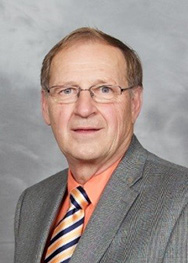2019 Leonard E. Wood Lecture
Future of Transportation in America

by Dr. Gerry Huber
Associate Director of Research
Heritage Research Group
Monday, March 18, 2019
3:30pm - HAMP 1144
Abstract
The health of a society and its economic well-being is tied to transportation. The ability of people to move freely creates their greatest opportunity for economic advancement. And the ability to move goods at a low cost with the least environmental impact fuels the national economy.
In the early 20th century long distance transportation within the United States consisted mainly of steam-powered trains and to a lesser extent, water transportation on navigable rivers. Road transportation was predominantly local and the average person did not move long distances. With the advent of inter-state highways in the 1920s and interstate highways in the 1960s, mobility became available to the average person and businesses were able to easily transport goods for long distances. As the Interstate Highway system ages, and efforts to maintain the system demand ever-growing resources, the asset that once helped build the national economy in the last half of the 20th century is threatening to become a drag on future economic growth.
This presentation will consider the role that the Interstate Highway system has played in expansion of the national economy and its contribution to the economic well-being of its citizens. A future vision of America's Transportation Network will be presented. This vision, developed at Purdue University under the sponsorship of Fred Fehsenfeld Sr., will pose (and suggest an answer to) the question of "In 2040, how will we move goods and how will we move people in the U.S and how will we pay for it?"
Bio
Originally from Canada, Mr. Huber received an engineering degree from the University of Saskatchewan then worked 10 years for the Saskatchewan Ministry of Highways and Infrastructure. The Ministry sent him to the University of Texas at Austin for a master's degree under Professor Tom Kennedy who would later be the Technical Director of the Strategic Highway Research Program that developed performance-graded asphalt binder specifications and Superpave mix design. In 1988 he joined the Asphalt Institute and became involved in the SHRP program working as part of the team responsible for developing the Superpave mix design system.
Today Gerry works for the Heritage Research Group, the research arm of the Heritage Group. Formed by Mr. Fred Fehsenfeld Sr. in 1979, the research group reflects Fred's visionary approach to solving problems. Gerry has been active in asphalt technology and the application to solving problems. He has been involved in technical associations such as ASTM and TRB and is Past President of the Association of Asphalt Paving Technologists, the Canadian User Producer Group for Asphalt, the Canadian Technical Asphalt Association and the International Society for Asphalt Pavements. Gerry was fortunate to work with Fred Fehsenfeld to develop a vision for the future of transportation in the United States, part of which he will be sharing with us.
